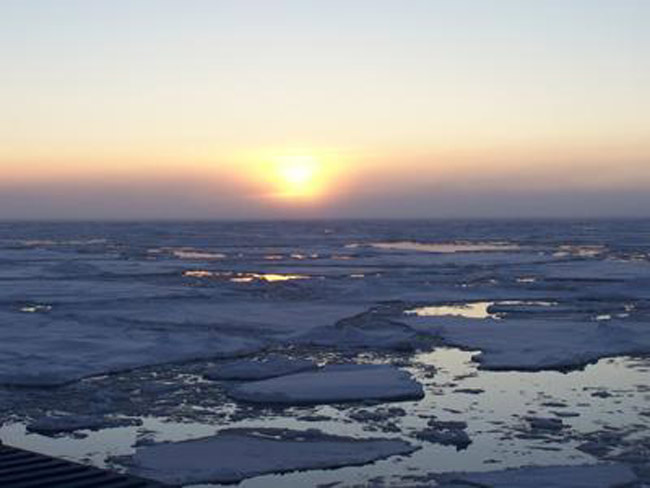Arctic Sea Ice Melting Faster Than Predicted

Arctic sea ice is melting at a significantly faster rate than projected by even the most advanced computer models, a new study concludes.
"While the ice is disappearing faster than the computer models indicate, both observations and the models point in the same direction: The Arctic is losing ice at an increasingly rapid pace and the impact of greenhouse gases is growing," said study team member Marika Holland of the National Center for Atmospheric Research.
Holland and her colleagues compared model simulation of past climate with observations by satellites and found that the models simulated a loss in September ice cover of 2.5 percent per decade from 1953 to 2006. (September marks the yearly minimum in Arctic ice cover.)
While the highest rate of decline in any of the models was 5.4 percent per decade, satellite measurements, which are considered more reliable, showed that September ice actually declined at a rate of about 7.8 percent per decade during the same period.
"This suggests that current model projections may in fact provide a conservative estimate of future Arctic change, and that the summer Arctic sea ice may disappear considerably earlier than IPCC [Intergovernmental Panel on Climate Change] projections," said study team member Julienne Stroeve of the National Snow and Ice Data Center.
The shrinking ice may actually be about 30 years ahead of model predictions, meaning the Arctic could be ice free in the summer earlier than the IPCC’s predicted timeframe of 2050-2100.
- Timeline: The Frightening Future of Earth
- Arctic Summer Could be Ice-Free by 2040
- All About Global Warming
Sign up for the Live Science daily newsletter now
Get the world’s most fascinating discoveries delivered straight to your inbox.










